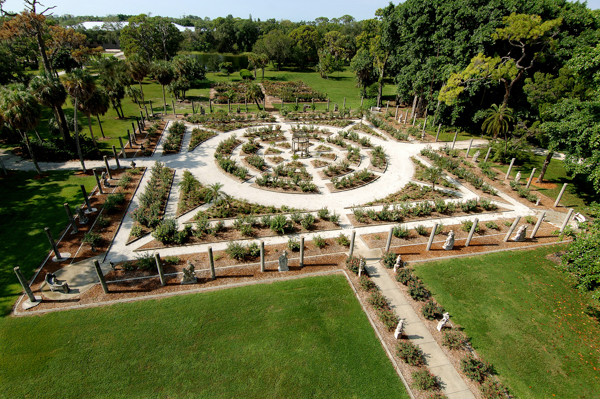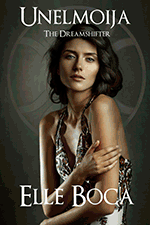Luxury Travel Review

Private time with Vulnerable clouded leopard cubs
Photos by Gary Cox and Elena del Valle

Despite the subtropical heat the sisters were surprisingly relaxed.
We recently spent a few precious minutes inside an enclosure with Lura and Malee, two female clouded leopard (nebulosa) cubs at Panther Ridge Conservation Center (2341 D Rd Loxahatchee Groves, Florida 33470, +1 561-795-8914, www.pantherridge.org) in Florida. A warning about how sharp their teeth were did little to dampen out enthusiasm once we had caught sight of the junior cats through the chain link fence of their enclosure. Lura, seven months old, and Malee, five months old, looked healthy and were full of energy, mock stalking each other and jumping with ease from one side to another. Despite the heat the sisters were surprisingly relaxed, allowing us to watch them and take photos as they played. Their brother was unable to join us because he was recovering from an injury.

Lura and Malee played while we watched.
Clouded leopards are beautiful and like so many species may be in danger of disappearing in the future. According to CloudedLeopard.org, a Washington State nonprofit (per its website), in 2014 there were only 166 clouded leopards in zoos in the world, including 37 of them in the United States.

Sadie Ryan, head keeper and facilities manager, holding one of the cubs in her lap
To raise funds for its residents and increase feline awareness Panther Ridge offered tours by appointment and private time with the clouded leopards. Special thanks to Sadie Ryan, head keeper and facilities manager, and Barbie Jetter, assistant director, who welcomed our photographers at their center during an especially busy period. The staff and animals were in the midst of a cumbersome move from Wellington to Loxahatchee in Palm Beach County.

Barbie and one of the cubs
According to the International Union for Conservation of Nature Red List (IUCN), clouded leopards are Vulnerable. The Swiss based membership organization defines the term as “facing a high risk of extinction in the wild.” Although exact numbers seem elusive one website estimated only 10,000 of them remain in the wild.

According to the IUCN Red List clouded leopards are Vulnerable.
Panther Ridge is a 501(c)(3) nonprofit dedicated to combining “feline husbandry with conservation awareness to educate the public on wild felines.”
Why I especially liked central Florida restaurant
Article and photos by Elena del Valle

Josh Oakley, co-owner, The Smiling Bison restaurant and bar, holding the House Charcuterie and Cheese board
During a weekend visit to Sanford, Florida I had dinner with three colleagues at The Smiling Bison restaurant and bar (107 S Magnolia Avenue, Sanford Florida, 32771, +407 915-6086, www.smilingbison.com), a locavore venue. My dinner that night was tasty, well prepared and well presented. I loved that the restaurant staff made virtually all of the dishes from scratch using fresh (not frozen) ingredients, that 100 percent of the produce was domestic and mostly organic, and that meats were almost all free of added chemicals, according to Josh Oakley, co-owner.
He said by email later, “We make all pasta dough, sauces, cured and smoked meats/ sausages, etc. from scratch on premises. We source primarily from several local farms and their availability is the main force behind our weekly menu changes. All farms we source from use 100 percent organic practices, but getting and official organic certification is a tedious and expensive process which not all of them have gotten.”

Our Duck Lovers Pizza fresh from the open kitchen
When asked what percent of animal products in the restaurant are free of added antibiotics and added hormones he replied, “I’d say about 95. We do a chicken wing night once a month and the wings are pretty much the only commodity meat you’ll find on our menu.”
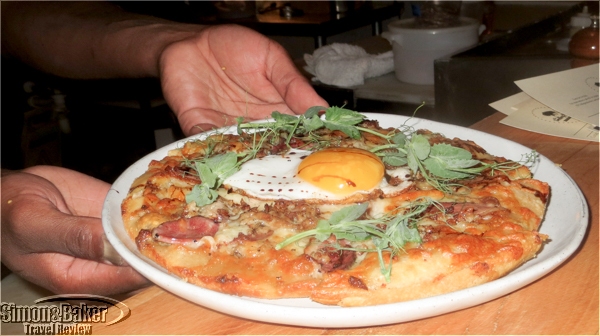
Our Duck Lovers Pizza Duck Lovers Pizza starter with duck ham, duck sausage, duck confit, jack cheese and a duck egg
I tasted the following dishes shared at our table: Smoked Fish Dip starter of trout roe, house made saltines and dill; and Duck Lovers Pizza starter with duck ham, duck sausage, duck confit, jack cheese and a duck egg; and House Charcuterie and Cheese with chicken liver mousse, summer sausage, kielbasa, garlic beef salami, pepperoni, grafton two year cheddar from Vermont, rogue Oregon blue cheese, house sourdough bread and pickles. For mains we had Spaghetti & Meatballs made with beef and pork meatballs (a favorite). Because our transport arrived before we had a chance to order our final course we missed dessert.
Our four stools at the Chef’s Table provided us front row seating over the cook’s work space, which faced the dining room. Despite it being the busiest night of the week Oakley made time to answer questions and describe dish preparation. Joel Serrer, our friendly server, likewise answered questions about the menu and beverages.

Spaghetti & Meatballs made with beef and pork meatballs
The 3,000 square foot restaurant, owned by Ron Thomas and Oakley, dated to 2013. The building was built in 1912. Originally it was the headquarters of The Sanford Herald newspaper it also served as home to a chapter of The International Order of Oddfellows prior to being converted into a restaurant space.
The name of the restaurant was a nod to the Oakley, who was born and raised in Buffalo, New York. A self taught cook who never attended culinary school he credits his early interest in food and cooking to his grandmothers.
The restaurant was centrally located in Historic Downtown Sanford, the food was well prepared from scratch using fresh and wholesome ingredients and the service was warm and attentive. My only beef? As the evening progressed and the restaurant filled up the noise level rose until I could barely hear the person in the stool next to mine. Should I find myself in Sanford again The Smiling Bison will be at the top of my list.
Our espresso style tea tasting
By Elena del Valle
Photos by Gary Cox

Flavored sugar cubes from the Teaspressa Starter Kit
Years ago in a small cafe in Stellenbosch, South Africa I had a memorable red tea made like an espresso. The resulting beverage was concentrated and small with the rich flavor of South African red tea. Recently, an at home tasting of four loose leaf teas from the Teaspressa Starter Kit reminded me of that delicious beverage. Teaspressa (Arcadia Signature Cafe, 4628 E Indian School Road, Phoenix, Arizona 85018, +1 917-710-5748, www.teaspresssa.com, info@teaspressa.com) is a new Arizona company founded by Allison DeVane. She created Teaspressa’s proprietary Tea Concentration Technology that uses a pressure extraction method to produce tea blends that, like espresso, can be used to make Tea Lattes, tea-based drinks comparable to gourmet coffee beverages.

A tea shot and flavored sugar cubes

Our Starter Kit arrived in the mail with a black espresso pot, four teas, and four packages of flavored sugar cubes.
”Teaspressa is the first and only beverage that is a hybrid of tea and coffee, resulting in a healthy alternative to traditional caffeine drinks,” DeVane, who is also owner of the company, said by email via her publicist when asked what is special about her company’s teas. “Using a patented production process, Teaspressa is concentrated tea that contains as much caffeine as an espresso shot, but provides consumers the health benefits of traditional tea blends.

Manhattan Black, one of four teas in the Starter Kit.
Teaspressa is made similar to a shot of espresso, and has the same amount of caffeine; however, Teaspressa does not contain coffee, it is a concentrated tea that is made using a pressure extraction method, resulting in Teaspressa’s products containing all of the health benefits found in traditional tea. Just like espresso, Teaspressa can mixed with milk and more to create lattes and other gourmet coffee-like beverages, but with tea. Teaspressa can be made at home easily and similarly to traditional coffee, so consumers don’t lose their morning coffee ritual.”

Red tea, naturally free of stimulants, in the espresso pot before brewing
Our Starter Kit arrived in the mail with a black espresso pot, four bags with several servings of tea each, and four packages of flavored sugar cubes. The teas, blended in Phoenix, were Manhattan Black, proprietary black tea and German rye; Cape Town, naturally caffeine-free rooibos and rye; Green Gold, proprietary green tea blend; and Charles Grey. There were four Luxe Sugar Stick flavors, handcrafted by Teaspressa using all-natural ingredients: London Fog, Rose (recommended by DeVane with champagne), Salted Caramel and Vanilla.

The teas, blended in Phoenix, were Manhattan Black, Cape Town, Green Gold, and Charles Grey.
According to DeVane, Teaspressa’s products are certified organic by the United States Department of Agriculture and made from “all natural, artisan loose-leaf tea blends, authentically sourced from China, Germany, South Africa, India and Japan.” She explained that the signature tea blends “underwent multiple phases of testing and are specialty curated for the brewing method that is similar to coffee brewing.”
Three of us, all tea fans, sampled and liked the teas and their concentrated flavor. We made them using the espresso pot per the instructions that came with the package. While none of us sweetens our tea we tried the sugar cubes, each less than 10 calories per cube and made with sugar from Hawaii, according to DeVane, on their own and also liked them. My favorites were London Fog and Rose in that order. The two men preferred Salted Caramel and Vanilla.
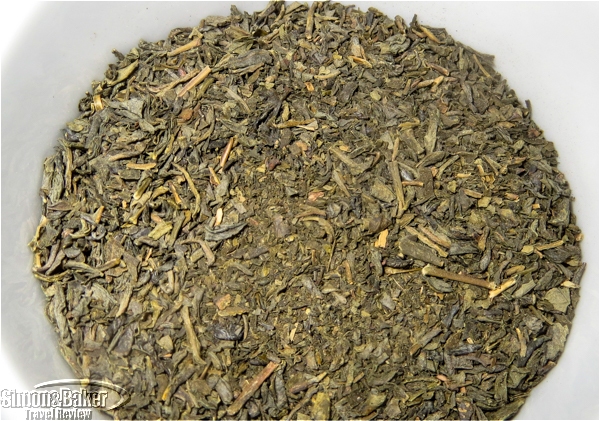
The Green Gold
The Teaspressa tea shots were especially appealing when time was limited such as at the end of a meal and when in the company of espresso drinkers. In lieu of the longer time it takes to savor and drink a cup of tea or a pot of tea sometimes it would be nice to have a tea shot. The teas were available via the company website as well as at Teaspressa Ann Arbor Signature Cafe (414 S Main St #115b, Ann Arbor, Michigan 48104) and Teaspressa Frank Lloyd Wright Kiosk (12621 N Frank Lloyd Wright Blvd, Scottsdale, Arizona 85259).
Matching US handcrafted fine pens an indulgence when traveling
By Elena del Valle
Photos by Gary Cox

Each pen was packaged in an attractive, sturdy box.
While electronic devices have reduced our need for handwriting to almost nothing they can’t replace the pleasure of holding a fine writing instrument. A tiny bit of joy fills me with every letter I write using a pen or better yet a fountain pen. There is something about the weight of a pen resting between my fingers and the smooth flow of ink onto paper that transports me to a higher plane.

The pocket clip was set with a tiny blue sapphire from Swarovski Gems.
Usually disposable pens are safest when traveling. At the same time, leisure trips sometimes provide opportunities to indulge in writing for pleasure and I miss my nice pens. So it was that I chanced on an idea recently: to take a matching set of handcrafted pens, a rollerball and a fountain pen, William Henry Cabernet RB8-1101 and William Henry Cabernet F8-1101 respectively, from William Henry (William Henry, 3200 NE Rivergate St, McMinnville, Oregon 97128, +1 503 434-9700, www.williamhenry.com, sales@williamhenry.com) on a local trip. As of this writing the fountain pen has been discontinued.

With their caps on I was unable to tell the two pens apart. Once the caps were off it was immediately clear which was which.
I tried the rollerball pen, which retails for $1,600, first. It felt solid yet not heavy and wrote with ease. When a road trip popped up I decided to take both pens rather than leave the untested fountain pen behind. I happened to have a fuchsia leather pen case for two in which they fit.

One of my favorite features was the patent-pending Wavelock™ cap closure system.

The fountain pen (now discontinued) had a dual tone white and yellow 18 karat gold nib.
During the trip, I charged the fountain pen with the single black ink cartridge that came in the case. It took a couple of tries until the ink came out. And, it seemed to require more pressure than I use on my other fountain pens. Once I became accustomed to it I liked the fine elegant letters I was able to form thanks to the German made dual tone white and yellow 18 karat gold medium nib. After a few hours it required several tries to get the fountain pen ink to flow. Placing it in a sealed snack size plastic bag when not using helped a bit, but as of today it still requires scribbling for a few minutes with little to show for it or placing the tip in cold water or running water. This has happened to a lesser extent with other fountain pens.
I liked the understated unisex style of the pens, which require four months to make. Stabilizing the coral takes time, a spokesperson explained by email. In both pens the pocket clip was set with a tiny blue sapphire from Swarovski Gems. The sapphires are from Nigeria, Madagascar or Sri Lanka.

I took both pens on a road trip in a fuchsia leather pen case for two I had.
The pens were made with rare materials, 100,000 year-old fossil coral from the Florida Keys for the barrel and aerospace grade titanium and aluminum. The accents on the carbon fiber cap were from Mokume Gane, a Japanese metalworking procedure, which produces a mixed-metal laminate with distinctive layered patterns, and hand forged Damascus steel. William Henry only manufactured 250 pens in each of the two models.
One of my favorite features was the patent-pending Wavelock™ cap closure system, “a ring of chromium steel balls embedded in a titanium ring captured in wave-shaped grooves in titanium collars for closed and post positions.” The design meant there was always a place for the pen caps, which if I paid attention when I attached them to the pen body always remained secure in place whether the pen was open or closed.
Ink spills and stained leather cases have taught me to avoid flying with fountain pens. Still I miss them during extended trips. Perhaps in the future I will take only the rollerball when I fly, hoping its outer appearance will keep me from missing its fountain pen partner too much.
I was hesitant about selecting a product from a men’s catalog, wondering if the pens would be masculine, heavy or bulky. I need not have given it a thought. I later discovered that about 23 percent of William Henry customers are women. According to a spokesperson, some 75 percent of them purchase a gift, while one quarter purchase for themselves.
There were many features I appreciated about the pens and the company behind them. It began with the distinctive limited production pens themselves as well as the company policies. One of the first to catch my attention was that the products were completed and shipped from the William Henry studio in Oregon. From the hefty case each pen arrived in to the details of the sapphire on the clip and a WH on the top of the pen cap the products were as pretty in person as on the website. And they felt solid yet well balanced when writing. The rollerball is now the first pen I reach for among the many writing instruments on my desk.
William Henry, a small maker of artisan products in Oregon, was founded in 1997 by Matt Conable, the brand’s creative director. The company seeks to work with “some of the most skilled and talented craftsmen, artists and engravers in the world to create products that are timeless, exclusive and strike a personal chord with their owners.” William and Henry are the middle names of the two company founders.
Why I liked natural first aid ointment
Article by Scott S. Smith
Photos by Gary Cox

Curoxen was made by an Italian homeopathic medicine company, according to the manufacturer’s website.
A couple of days after receiving a half-ounce tube of Curoxen: First Aid Ointment in the mail, I accidentally cut myself. The ointment soothed the cut immediately. My skin seemed to heal so fast I wasn’t even sure exactly when it happened, perhaps faster than my standard antibiotic ointment. A week later, I couldn’t even remember exactly where the cut had been. I would take Curoxen First Aid with me on my next trip, rather than my usual ointment.
The Curoxen tube said it uses a natural approach as an alternative to conventional treatments to prevent infection, heal and reduce pain for minor wounds, burns, cuts, and scrapes while relying on homeopathy, a European philosophy of “likes cures like” developed in the 18th century. I agree, as the box notes, that “overuse of antibiotics is a global problem.”
According to the company website, Curoxen is available over-the-counter at pharmacies. The half-ounce tube retailed for $9.99 and the one ounce size for $14.99. The active ingredients, per the package were olive extract “2X HPUS and calendula 3X HPUS.” This refers to the standards of the Homeopathic Pharmacopoeia of the United States. Homeopathy uses minute amounts of organic substances, which homeopathic doctors believe help specific problems. The 2X and 3X indicate the number of times the ingredient was diluted in the process of making it, so that there is one percent of the olive extract and just one-tenth of a percent of the calendula. The inactive ingredients were oxygenated olive oil and pure essential oil of lavender. The box indicated there were no petroleum products or preservatives.
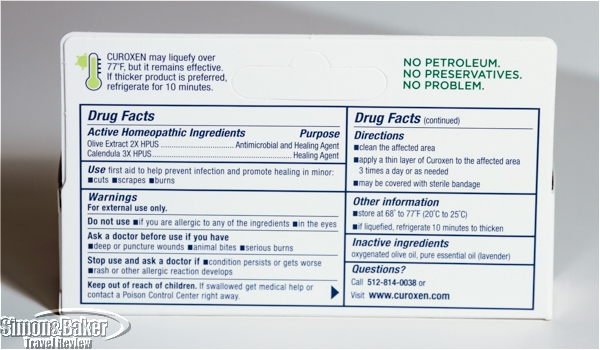
The back of the package listed the active homeopathic ingredients and other important information.
According to the website of Curoxen’s parent company OrganiCare (2101 E. St. Elmo Road, Austin Texas 78744, +1 512-401-3572, www.curoxen.com, info@organicare.com), independent in vitro lab tests show that this product “kills over five times more bacteria than antibiotic ointments.” The formula was based on an Italian university discovery of the healing benefits of olive oil when combined with oxygen. Curoxen was manufactured by an Italian homeopathic medicine company, according to the website (I could not find the country of manufacture on the package).
Per her bio, Caroline Goodner, chief executive officer, OrganiCare, founded two genetics companies and was chief executive of a firm specializing in wellness products for new moms. David Shockley, chairman, was described as a biologist focused on innovation in medical devices. Eleanor Piel Womack, M.D. was listed as board certified in internal medicine and anti-aging and regenerative medicine and the company’s medical advisor on the Curoxen website.
Having worked with integrative doctors, who relied on conventional and unorthodox medicine, I have heard of many patients claims to be helped by homeopathy. Also, I have heard anecdotes from pilots who swore by the formula for jet lag, and people who massaged painful legs with an ointment they claimed worked better than anything else. While I don’t believe the effectiveness of homeopathy has been proven in humans, it’s hard for me to dismiss my experience with this ointment as purely psychosomatic.
Rose Garden unexpected and fragrant delight during Ringling visit
By Elena del Valle
Photos by Gary Cox*

On a spring visit to the John and Mable Ringling Museum of Art in Sarasota, Florida we discovered the Mable Ringling Rose Garden (John and Mable Ringling Museum of Art, 5401 Bay Shore Road, Sarasota, Florida 34243, +1 941-359-5700 ext 2109, https://www.ringling.org/, Karen.smith@ringling.org). It was one of those sunny yet chilly and breezy days that is perfect for outdoor strolling. We saw the garden on our way to John and Mable’s storied home, now a museum, and made a point of stopping.

A signs described the history of the rose garden.
It was one of the highlights of our visit. I especially enjoyed the often fragrant flowers in 18 hues (the American Rose Society recognizes 18 colors of roses, a Ringling spokesperson explained by email), each with a name tag at the foot of the bush. The new name tags indicated if the rose was fragrant, Karen Smith, MSc., curator since 2015, Mable Ringling Rose Garden, explained when I asked about a particular flower a volunteer had suggested I see.
Flower fragrance is not a straightforward matter it turns out. It varies, according to the ratings of the American Rose Society, from Strong, Moderate and Mild, to None. So many roses were scented I was not surprised to discover 81 percent of the roses had some scent.

One of the paths lined with statues
At the time of our visit, excluding the miniatures and miniflora’s, 40 percent of the roses had a Strong scent, 19 percent Moderate, 22 percent Mild and 19 percent had no fragrance.
Ms. Smith is a former research scientist in the neuroscience field. Throughout thirty years in science, horticulture was always a part of her life. Care of the garden was no accident. Although she was the only employee dedicated to the garden when needed six estate gardeners were available to lend a hand. And 26 volunteers, including 15 seasonal visitors to the area, worked in the garden from three to 12 hours per month.

Karen Smith, MSc., curator, Mable Ringling Rose Garden

There are many challenges and stresses that can affect rose plants, the garden curator explained. She relies on Best Management Practices and a weekly monitoring system during which more than 100 bushes are inspected each week.

“A rating is given for pests and diseases,” she said by email. “If it is determined that the disease or pest is at a level that is unacceptable, treatment occurs. We use the safest treatment possible for each situation. For example when the weather is cool enough we will use Neem Oil as our pesticide for Aphids, Mites, Thrip, and Scale. Every spring we remove the old mulch and bring in 75 cubic yards of compost, fertilize, and re-mulch
When asked for fertilizer specifics she shared details generously, “Currently for fertilizer we use a 4-3-4 Turkey Manure (Mighty Grow) and 16-0-0 Blood meal – each four times a year. Supplement with a Sul-Po-Mag (0-0-22) twice a year. For example to fertilize once using the Mighty Grow takes 650 lbs.”

What are the best months to see the roses in bloom and at their most fragrant? December and January as well as March and April. In 2017 Hurricane Irma caused some damage to the garden so it was not at its prettiest during our visit.

“We have two cut-backs a year, one in February and one in September, the garden curator said. “The large blooms occur approximately 8 weeks after cutback. It take us 3 weeks to complete the cutback- therefore the bloom is in phases comparable to the cutback.”

Many visitors strolled through the garden on the day of our visit.
We later discovered the garden dates back to 1913. Sadly, none of the plants from Mable’s era remain. The garden consists of 1,200 rose plants introduced between 1793 and 2002, among them Tree Roses, Hybrid Teas, Floribundas, Grandifloras, miniature roses, shrubs, Old Garden Roses (varieties introduced prior to 1867). Among them was a rose dedicated to Mable.

The Italian inspired Rose Garden has a circular wagon wheel design.
(Click photo to view full size)
The 27,225 square foot Italian inspired Rose Garden has a circular wagon wheel design and pathways lined with garden sculptures of courting couples in pastoral scenes. By the late 1930s the estate and the garden fell into disrepair. Many years passed before it returned to a state similar to the one we saw during our visit. By 2004 the garden was restored thanks to the efforts of the resident horticulturist, Ron Mallory and the volunteers he recruited.
It received accreditation from the All-American Rose Selections in 2004, and recognition in 2006 as the most outstanding All-American Rose Selections Public Rose Garden in the nation.
*Aerial photo of the Rose Garden (date unknown) courtesy of the John and Mable Ringling Museum of Art

